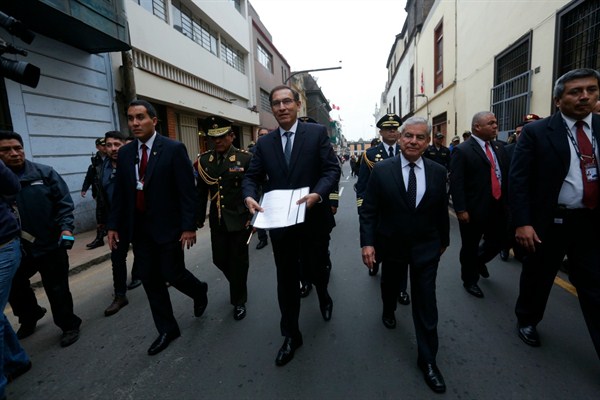The resignation last spring of Peruvian President Pedro Pablo Kuczynski, who faced impeachment on charges of corruption, brought to power an unlikely figure: Martin Vizcarra, a former governor of the remote region of Moquegua in southern Peru. Vizcarra had been serving concurrently as vice president and ambassador to Canada when he was called back to assume the nation’s highest office. His attempts to tackle systemic corruption in Peru, including calling for a national referendum on several key reforms, have led to a standoff with the country’s Congress, which is controlled by the opposition Popular Force party. In an email interview, Julio Carrion, a Peruvian political scientist and professor at the University of Delaware, discusses whether the anti-graft push will succeed.
World Politics Review: How bad is corruption in Peru, and what is the relevant history of corruption as a political issue?
Julio Carrion: As with many other Latin American countries, corruption in Peru can be traced back to its colonial heritage. The Spanish crown started the tradition of auctioning off public offices in the Americas as a way of collecting revenue. In modern times, the legacy of authoritarianism and venal democratic governments in Peru has made corruption a pervasive issue. Most recently, the autocratic government of Alberto Fujimori, who was president from 1990 until 2000, would systematically buy off potential opponents and reward supporters. Corruption during this period was highly centralized by Fujimori and his nefarious security adviser, Vladimiro Montesinos, and the judiciary was completely under the control of the executive branch of government. Videos released after the fall of Fujimori show Montesinos doling out cash to members of the judiciary and electoral board to buy favorable votes, and to lawmakers to get them to switch parties. These videos also showed owners of television stations and tabloid newspapers accepting cash from Montesinos in exchange for favorable coverage of the government.

